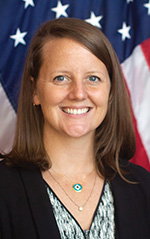Jeannette Lafrance: A Pioneering Foreign Service Woman
The upheaval of World War II opened opportunities for adventurous women, including in the U.S. Foreign Service.
BY LARISSA MOSELEY
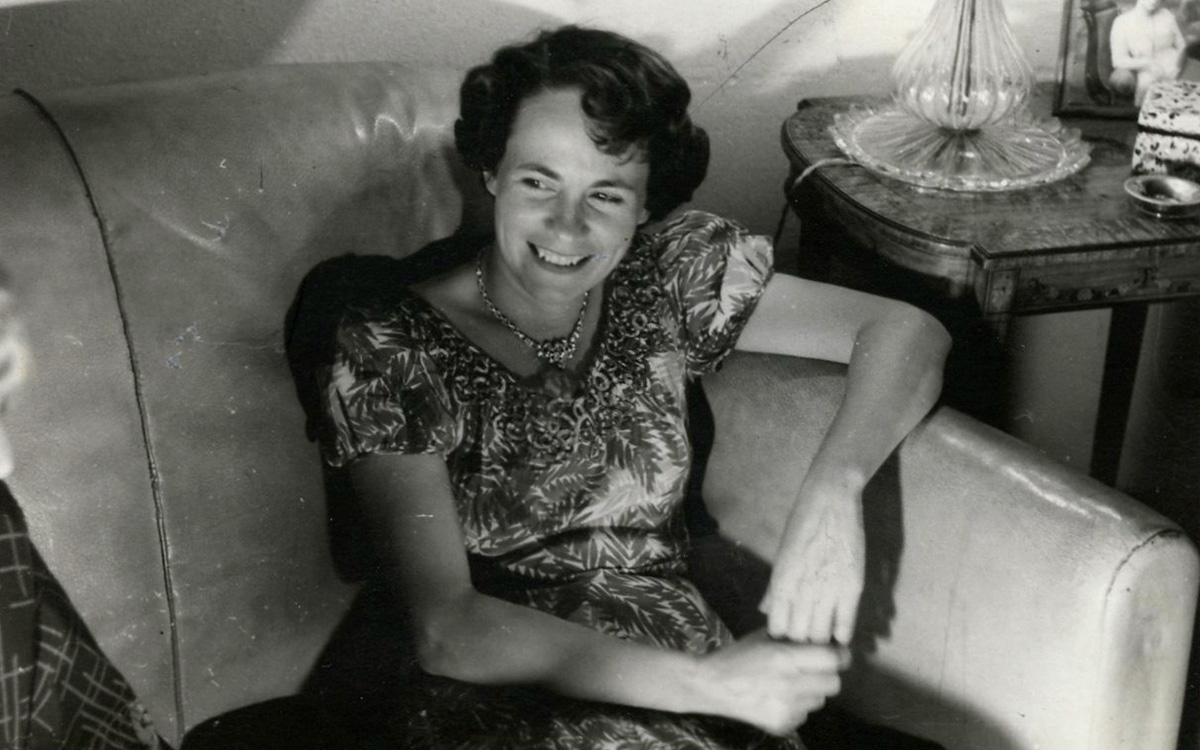
Jeannette in Egypt.
Courtesy of the Lafrance Family

Jeannette Lafrance joined the U.S. Army WAC in 1943 and served until 1945. She was deployed to Hollandia, New Guinea, as a decoder in the Signal-Intelligence Corps.
Courtesy of the Lafrance Family
Jeannette Lafrance, who joined the U.S. Foreign Service in 1946, was on the cutting edge of women’s history in the United States. As the country was being transformed by the economic, social and political upheaval of the World War II era, Jeannette signed up—again and again—for opportunities newly opened to women. Despite being borne out of the horrors of world war, these opportunities were a breakthrough for women with ambitions for public service, work and adventure beyond America’s borders.
Amid the uncertainty of the period, with the United States finding itself at the forefront of global affairs for the first time and newly at the helm of maintaining peace and security, women like Jeannette stepped into the arena with tenacity and courage that is difficult to appreciate in modern times. The Foreign Service reopened employment opportunities for women following World War II, albeit limited to specific roles and only for unmarried women. For women to travel, let alone work abroad, without a male companion was unusual. This was when the Cold War was just beginning, and fears of Soviet nuclear and ideological threats globally and to the United States deepened.
For women like Jeannette, this environment, precarious as it appeared, was an opportunity but not without dangers. She ventured outside the norm of women’s roles of the era and served her country abroad, but she died prematurely during her third Foreign Service tour, in Egypt. Hoping to understand more about Jeannette’s life and death in Cairo, surviving family members, including her sister, another military veteran, approached the State Department. The consular section in Cairo helped find Jeannette’s missing Consular Report of Death Abroad, and her family was finally able to confirm the circumstances of her death.
Recently, Jeannette’s name was added to the Virtual AFSA Memorial Plaque (afsa.org/virtual-afsa-memorial-plaque) to honor her service. For U.S. Embassy Cairo, Jeannette’s family introduced present-day Foreign Services members to the life of a remarkable trailblazer for women officers.
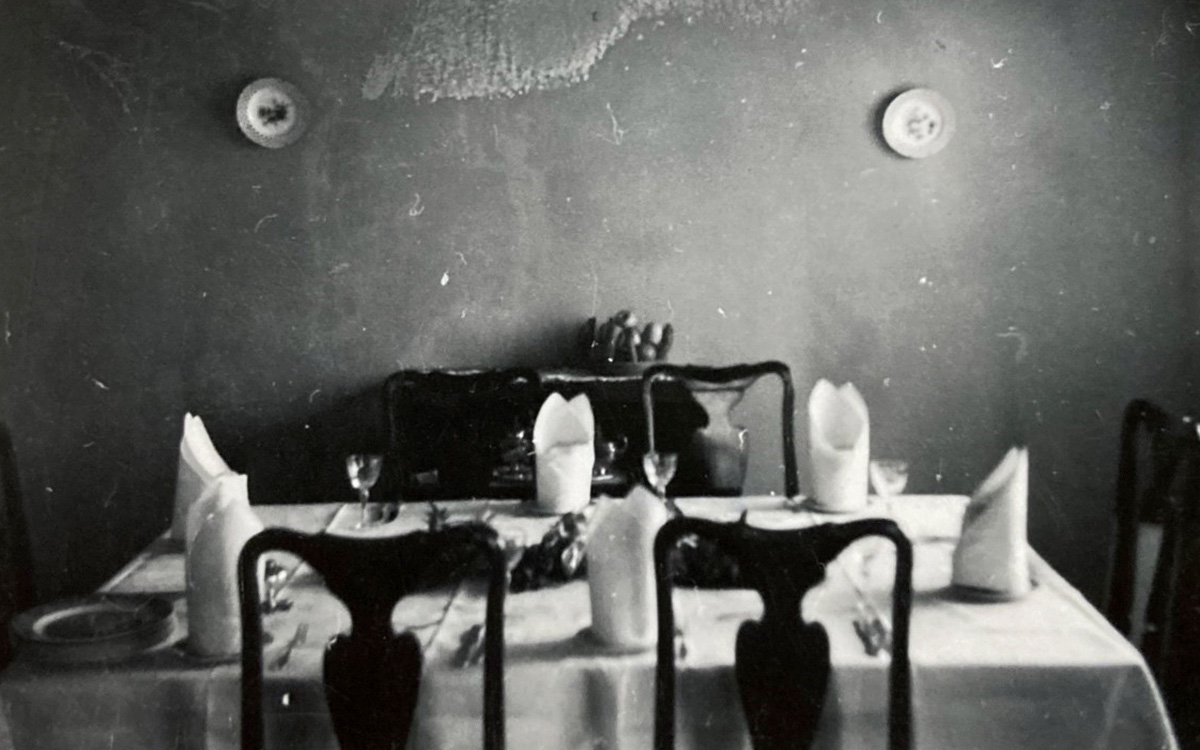
The dining room furniture in Jeannette’s apartment in the Zamalek area of Cairo bears a striking resemblance to tables and chairs still issued today.
Courtesy of the Lafrance Family
An Unconventional Path

When President Franklin D. Roosevelt signed legislation on July 1, 1943, that created the Women’s Army Corps, Jeannette Lafrance was working at the International Shoe Company in Rhode Island. A month later, she enlisted, joining her two brothers who were also serving in the U.S. armed forces. Thanks to this legislation, she was conferred the same ranks, privileges and benefits as her brothers. She would serve honorably first as a recruiter and then as a traffic analyst—a decoder—in the campaign for New Guinea and South Philippines. The army decorated her with a World War II Victory Medal and the Philippine Liberation Campaign Medal with one bronze service star, among other honors.
After the war, Jeannette returned home to work in the shoe factory once again but had already set her sights on new ways to continue her unconventional path. In her application to the Department of State, she wrote that she wanted to “travel constantly,” especially to Europe and China, and was particularly skilled at record keeping and using an “adding machine.” Among the first women to apply following World War II, she was ultimately appointed to the Foreign Service in the secretarial ranks on Dec. 12, 1946. She would first serve in Warsaw in 1947, followed by Lima in 1949, and then Cairo in 1952.
In 1946 there were very few women in the Foreign Service. The first, Lucile Atcherson, had been admitted in 1922, and as required by the Department of State until 1971, she was forced to resign when she married just five years later. There had not yet been a woman holding the rank of ambassador when Jeannette joined. Blacks and whites were segregated in State Department dining facilities in Washington, even as Ralph J. Bunche led Arab-Israeli peace negotiations in the Middle East.
These realities did not deter Jeannette. Her sister, Alice, remembers she made her decisions confidently and with conviction, and throughout her years of service, Jeannette’s evaluators noted that she regarded the Foreign Service as a career, even while recalling that she was “philosophic about its ups and downs.” Her pursuit of a Foreign Service life meant she could not marry and remain in the diplomatic corps, but she appears to have accepted this. After all, her family recalls, when one of Jeannette’s boyfriends threatened to break up with her if she joined the army, off she went and enlisted anyway. Clearly, as a woman on her own in the late 1940s and early 1950s, in male-dominated organizations, seeking an adventurous life, Jeannette knew her own worth despite the restrictions on professional women of the time.
Throughout her years of service, Jeannette’s evaluators noted that she regarded the Foreign Service as a career, even while recalling that she was “philosophic about its ups and downs.”
The photos, letters and documents from Jeannette’s life will be familiar to the contemporary diplomat as well as eyebrow-raising reminders of how society has changed. Her evaluations reflected the then-common view that a diplomat’s success was determined not only by the quality of their professional work. Jeannette’s first review in Warsaw determined that she “is neat and well dressed ... has a pleasant personality” and openly discussed her lingering malaria and its impact on her professional abilities. In Lima, her evaluator noted that she was “a trim-appearing young woman,” as well as “poised, pleasant and rather attractive.” Thankfully, subjecting employees to evaluations of appearance, disposition and health status are no longer elements of the modern performance review.
Jeannette’s evaluations also show a valued employee, with ambition, goals and a deeply held interest in forging a path in the Foreign Service that was her own. While the U.S. ambassadors to Warsaw and Peru noted that she was “conscientious and hardworking,” “capable and efficient” and determined to advance professionally, it is clear she wanted to do so through opportunities that interested her. Jeannette aspired to become a “Chief of the File Room” and applied to a training program where she could pursue this interest. She wanted to leverage her native French-speaking abilities and appealed to the department’s chief of personnel to work in France or Francophone Africa. She wanted to pursue consular affairs, working toward this goal by the time she arrived in Cairo, her third post. In the present-day Foreign Service, some mentors would also suggest to junior officers that they take assignments that are true to their personal goals. Jeannette’s letters and evaluations suggest she was well ahead of her time in practicing this sound advice.
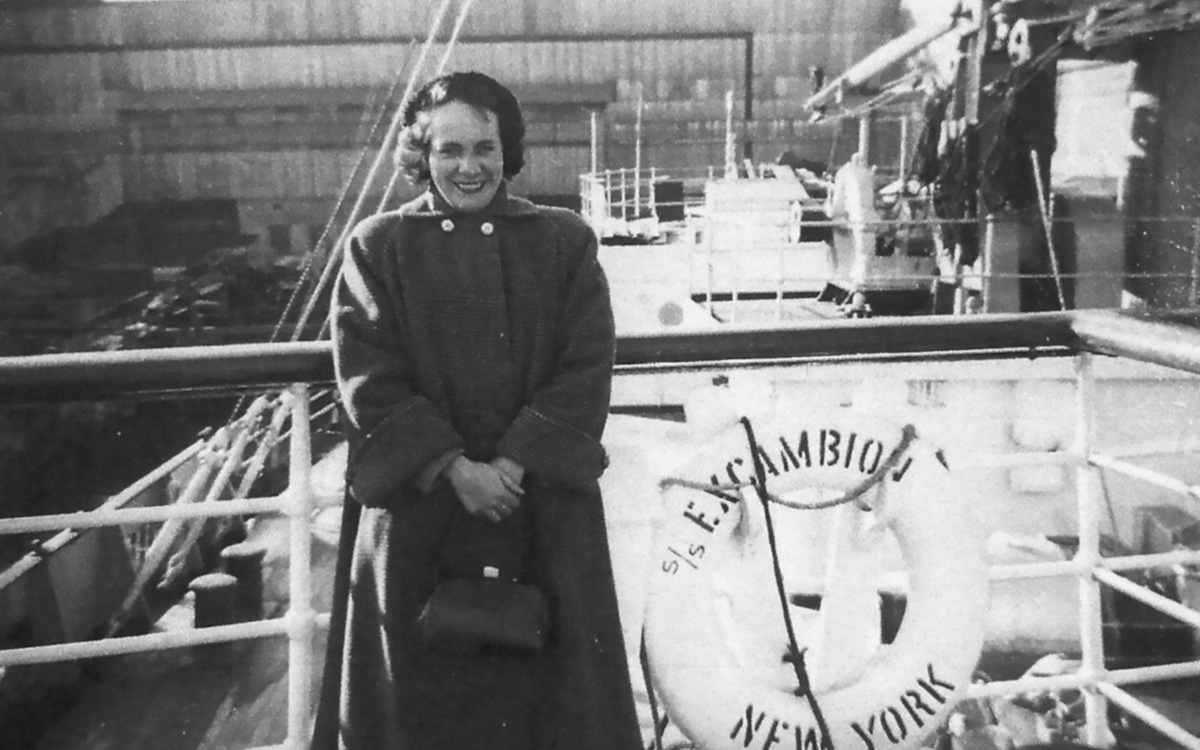
Jeannette Lafrance on the way to her assignment in Egypt in 1952.
Courtesy of the Lafrance Family
An Adventurous Spirit

Jeannette and her brother Paul Lafrance Sr., of the Coast Guard, in the South Pacific.
Courtesy of the Lafrance Family
Jeannette’s letters capture her adventurous spirit through her observations from three assignments that could not have been more different from one another, and some elements of them will be familiar to diplomats of today.
In Warsaw, she noted to the Nashua Telegraph, her local newspaper, that vacations were spent visiting other European countries because “Poland was still very much in ruins.” Her photos certainly reflected this. One she sent home captured a scene of her in a car with other women, and a damaged cityscape in the background. Other photos showed scenes of bombed-out buildings and piles of rubble. We know that the close-knit community forged in the aftermath of World War II Poland was important to Jeannette; her boss later reflected that she did not feel the closeness of the embassy community at her next post, in Lima, because “the embassy community in an Iron Curtain country such as Poland is of necessity much more closely woven.” Many diplomats who later served in Vietnam, Iran, Lebanon, Rwanda, the Balkans, Haiti, Afghanistan, Iraq or South Sudan would also grapple with the loneliness and loss of connection in assignments that followed wartime or traumatic tours. Many of her letters also dwell on the strange dichotomy of smiling faces against the backdrop of war-inflicted misery.
Peru, by comparison, offered a completely different experience. Jeannette’s photos reveal outings with girlfriends—in pants!—to the mountains of Peru and Bolivia with roadside pit-stop picnics with watermelons and scenes of iconic Catholic churches. She can be found in a crowd of Andean women, double-braids down their backs and clad in traditional hats, ponchos and layered skirts, or floating to shore on a caballito de totora (or “little reed horse”), a reed balsa fishing boat in Lake Titicaca. When she flew to Cusco, she writes of “the most thrilling plane ride I’ve ever taken,” where she had to use oxygen bags during the flight because the planes were not adequately pressurized at more than 10,000 feet in those days. Many travelers to Cusco will empathize with her coming down with soroche, having “severe pains in stomach, headache and a strong desire to die.”
After acclimatizing, her travels took her to remote villages of Puno, Pisac and San Salvador, witnessing indigenous dance, dress and ways of life that the modern traveler struggles to experience authentically. She writes enthusiastically of being chased after mass by men in “large fur hats” who exploded “some kind of dynamite without being too careful where they threw it,” much to the amusement of the locals. When Jeannette reached Machu Picchu, taking in the terraces and temples, the American professor Hiram Bingham, who had rediscovered and introduced the site to North Americans in 1911, was still alive and giving lectures at Yale. One can only dream of seeing Machu Picchu without today’s throngs of tourists scattered over its grounds.
Although she had requested transfer to Spanish- or French-speaking Europe or Africa, the State Department sent Jeannette to Cairo. In 1952 she boarded a ship in New York after her home leave, cruised to Alexandria and continued to Cairo in the same year as Gamal Abdel Nasser’s revolution, the dethroning of the Muhammad Ali dynasty and the end of British rule over Egypt. She lived with a colleague in an apartment near the embassy, located in Zamalek, with dining room furniture that on first glance has a striking resemblance to tables and chairs still issued today. Jeannette joined the Gezira Club, a famous sporting club frequented by today’s embassy community, and played golf on her weekends. She saw mummies, marveled at Saqqara’s pyramids, endured back pain from camel rides and befriended the Marine Security Guards. Her photos show her standing by the Nile, walking alongside men in galabeyas (Egyptian kaftans) in front of massive pharaonic statues in Luxor. They could easily be modern photos altered with popular filters.
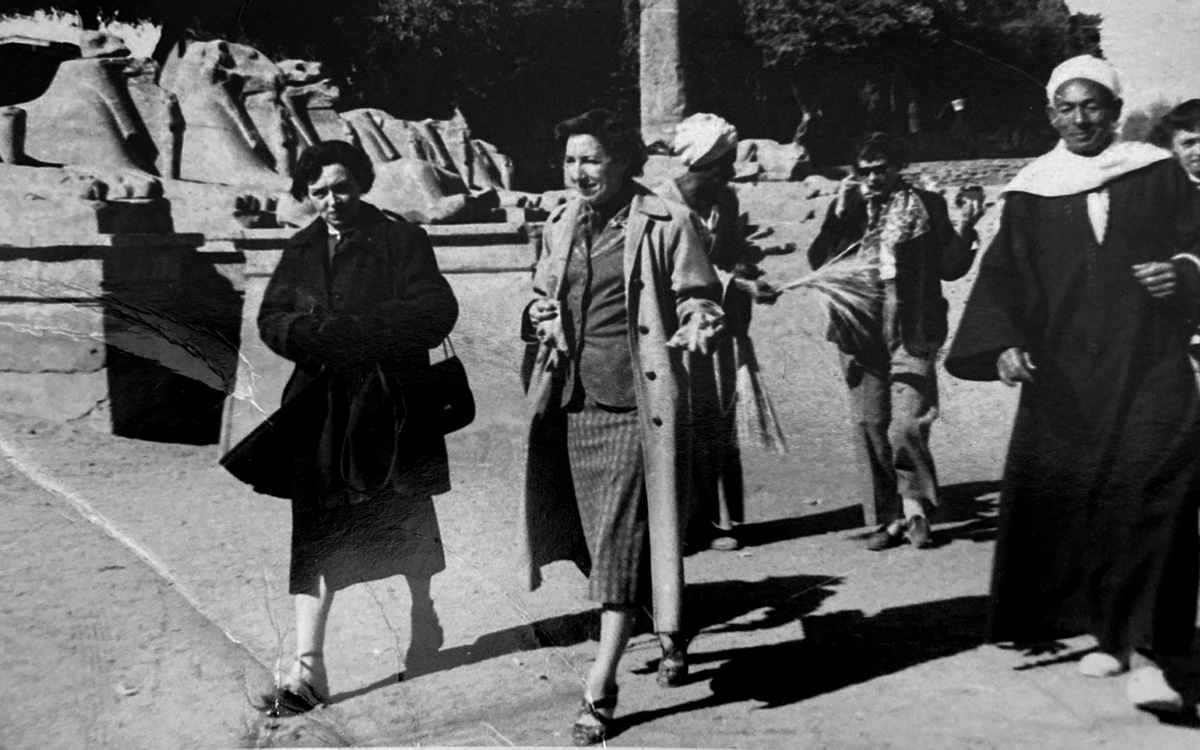
Jeannette (at left) and her friends tour Luxor.
Courtesy of the Lafrance Family
Notes from the Field
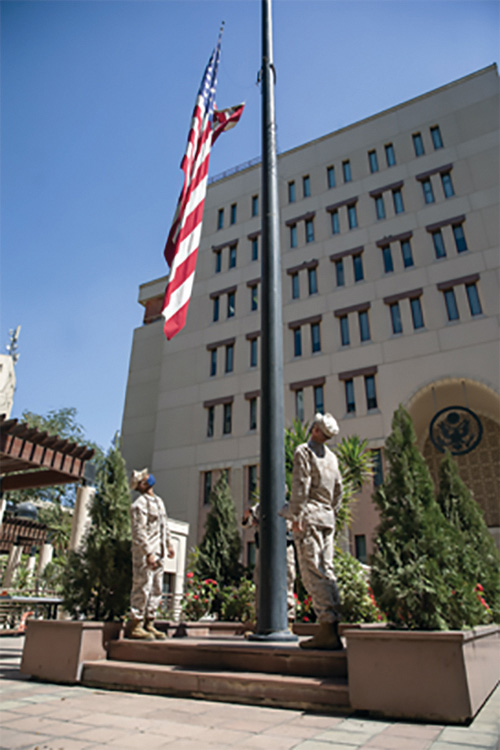
The U.S. Embassy Cairo salute to Jeannette Lafrance on March 18, 2021, during Women’s History month in the United States.
U.S. Embassy Cairo
In typical Foreign Service fashion, Jeannette visited friends from the diplomatic corps posted to interesting places. From Cairo, she traveled to nearby ancient cities of Damascus, Beirut, Jerusalem, Jericho and Bethlehem, places most Americans had only heard about in church or history books. She flew into Beirut from Port Said in 1953, having to fly over the Mediterranean instead of taking the land route through the Sinai because “Arabs and Jews are still feuding,” and the Egyptians would not have let her return. In another “thrilling” plane ride, she feared they “would never find the airstrip among the mountains in Beirut.”
Leaving Lebanon’s cedars, she drove via a modern highway to Damascus while passing the “historic ruins of Solomon and the Phoenicians, Greeks and Romans, Arabs, Crusaders and Tartar hordes.” Damascus, to Jeannette, was modern and clean despite being one of the oldest cities in the world. She was struck by the Umayyad Mosque because of its significance to both Christians and Muslims. The mosque contained the tomb of the head of Saint John the Baptist and was also where “Moslems stand around and pray like we would,” waiting for the “end of the world.” She noted that Muslims also believed that “the Prophet Mohamed [Peace Be Upon Him] will come ... for first judgment [in one of the mosque’s minarets] and God will be in the opposite minaret [sic].” Amman, by contrast, was an “oasis in the middle of the desert ... nothing but sand and sand-colored houses.” From there, on to the holy city of Jerusalem.
Jerusalem impressed Jeannette with what many modern visitors also grapple with—the proximity of the ancient religions to one another, the divisions between them and the difficulty explaining the “mixed feelings one experiences here.” Jerusalem was divided in half, “Jews on one side, Arabs on the other.” She would have been one of the early American witnesses of 60,000 Arab refugees living in tents in nearby Jericho, fed by the newly formed United Nations. At the Church of the Holy Sepulchre, she observed that Muslims are responsible for opening its doors every day and that sections are partitioned between the Greeks, Armenians, Copts, Protestants, Syrians, Ethiopians and Catholics for their services.
Jeannette remarked on the beauty of many of the mosques, such as the Mosque of Omar, where Jews had chased the merchants from the temple in the Old Testament, and which still had a stained glass window with a cross in its dome. In writing to her sister, a nun, Jeannette said she would not admit to the rest of the family that she had been inside mosques because the “family wouldn’t admit me inside their house if they knew.” Nonetheless, she visited the Holy Land’s many sites with curiosity.

Next to the portrait of Jeannette Lafrance is a letter from U.S. Ambassador to Egypt Jonathan R. Cohen to Ms. Lafrance’s sister, Alice Plautz, acknowledging her sister’s pioneering role in the Foreign Service and her untimely death in Cairo. The flag was raised at the embassy in Lafrance’s honor on March 18, 2021, the 67th anniversary of her death.
U.S. Embassy Cairo
A Worthy Record
In early 1954, Jeannette was preparing to depart Cairo at the conclusion of her tour and travel to Rhode Island for home leave. She had collected Christmas presents to share with the family on her return, as many Foreign Service officers are wont to do. One evening, she drew a bath at the end of the day as she normally would. After midnight, Jeannette’s roommate woke up to find the light still on in the bathroom. Looking inside, she found Jeannette submerged in the water. She had died by accident; the water boiler’s candle having blown out, the emission of carbon monoxide had left her unconscious, and she drowned.
On the 67th anniversary of her death, March 18, 2021, U.S. Embassy Cairo flew an American flag over the embassy grounds in Jeannette Lafrance’s honor. The flag was flown in observation of her public service in World War II and at the Department of State, and the courageous spirit that took her across the globe. As her friend, Ray Noles, had aptly remarked after her death: “She fulfilled her destiny in service of her country and died in its service in one of the remote outposts of the diplomatic service. We can all be quite proud of her record.”
Remembering the untold stories of past trailblazers like Jeannette can help us appreciate the present and strive to improve the future.
Read More...
- “Making It Work: Conversations with Female Ambassadors,” by Leslie Bassett, The Foreign Service Journal, July-August 2017
- “Women in The Foreign Service: A Quiet Revolution,” by Barbara J. Good, The Foreign Service Journal, January 1981
- “An Interview with Margaret Mead on the Woman Diplomat,” by John M. Cates Jr., The Foreign Service Journal, February 1969

